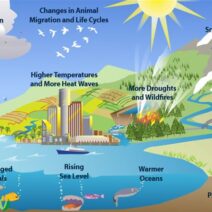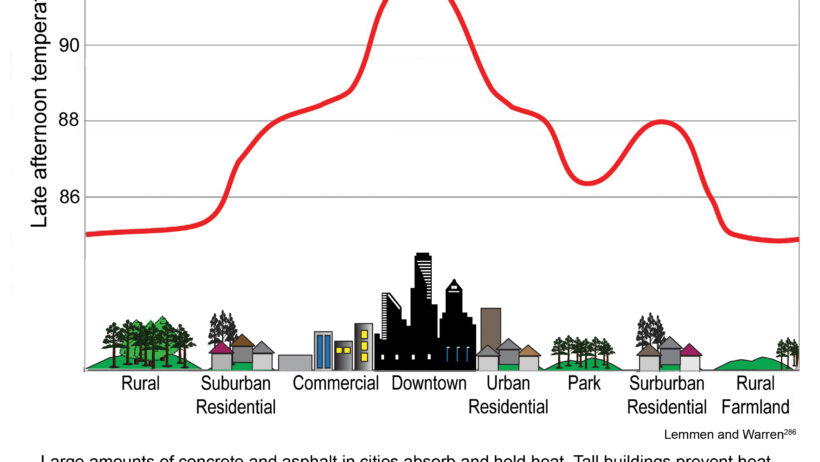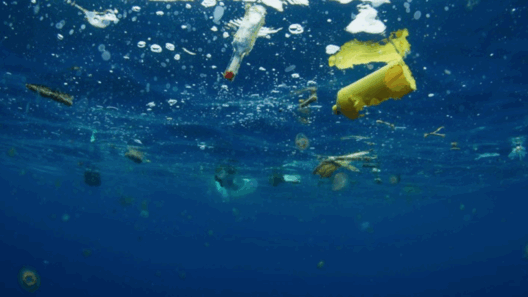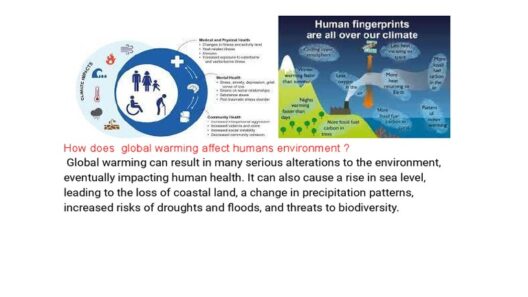Temperature inversion is a perplexing meteorological phenomenon that significantly contributes to urban heat traps and exacerbates global warming. Have you ever wondered why cities seem perpetually hotter than surrounding rural areas? This captivating question leads us to explore the complex interplay between atmospheric dynamics, human activity, and climatic patterns. In this discussion, we will scrutinize temperature inversion, its implications for urban heat islands, and the broader consequences it has on climate change.
At its core, temperature inversion occurs when the typical temperature gradient of the atmosphere is reversed. Generally, air temperature decreases with an increase in altitude. However, during an inversion, a layer of warm air traps cooler air near the surface, creating a phenomenon where pollutants and heat become ensnared below. This entrapment not only intensifies local heating but also deteriorates air quality. Urban environments are particularly susceptible to this phenomenon due to a combination of geographical features, human activities, and infrastructural elements.
The phenomenon of urban heat islands (UHIs) exacerbates the consequences of temperature inversion. Cities, with their concrete jungles, asphalt plains, and lack of vegetation, absorb and radiate heat more effectively than natural landscapes. During temperature inversions, instead of heat dispersing into the atmosphere, it can accumulate in urban areas, leading to significantly higher temperatures compared to surrounding rural environments. This disproportionate warming poses severe challenges for public health, energy usage, and ecological balance.
One of the most pronounced impacts of increased urban temperatures is on public health. Elevated temperatures can aggravate pre-existing health conditions, particularly respiratory and cardiovascular diseases. Vulnerable populations, such as the elderly and those with chronic illnesses, face heightened risks during heat waves, made worse by temperature inversions. Additionally, high temperatures can lead to increased ozone formation, further contributing to air quality deterioration. The consequences of these health issues extend beyond individuals, straining public health systems and increasing healthcare costs.
Moreover, the energy demands of urban areas soar as residents attempt to counteract the heat. Increased reliance on air conditioning not only escalates electricity consumption but also intensifies greenhouse gas emissions, thereby perpetuating the cycle of climate change. Ironically, while we seek relief from the heat, our response catalyzes further warming—a classic case of the law of unintended consequences.
An additional consequence of temperature inversions in urban settings is the impact on local wildlife and ecosystems. As temperatures rise, species that thrive in certain climatic conditions may find it challenging to adapt. Many plants and animals rely on specific temperature ranges, and prolonged periods of excessive heat can lead to stress or even death. This disruption can cascade through food webs, affecting not only individual species but entire ecosystems.
As we delve deeper into the ramifications of temperature inversions, it becomes apparent that urban planning and policy have crucial roles in mitigating these impacts. One potential challenge for city planners is to balance urban development with ecological sustainability. How do we create thriving cities without exacerbating the effects of temperature inversion? Innovative solutions are essential for addressing this challenge. For example, implementing green rooftops and urban gardens can help regulate temperatures by increasing vegetation and reducing heat absorption. Urban forests and parks can provide much-needed shade, helping to create a more temperate microclimate.
Furthermore, integrating cooling technologies, such as reflective pavements or enhanced building insulation, can reduce the heat retained in urban areas. The shift toward sustainable building practices, including the utilization of materials that minimize heat absorption, can also support mitigating measures against temperature inversions. By promoting a multi-faceted approach that encompasses urban design, energy efficiency, and public health strategies, cities can work towards countering the adverse effects of inversion and creating a more resilient urban environment.
Education and community engagement play pivotal roles in addressing the effects of temperature inversions as well. Residents must become aware of how their actions contribute to climate change and urban heat patterns. Public campaigns and educational programs should inform citizens about the importance of reducing emissions, conserving energy, and increasing green spaces. When communities rally together to implement changes on an individual and societal level, the cumulative impact can lead to significant advancements in combating the challenges posed by temperature inversions.
In conclusion, temperature inversion is far more than a mere weather event. It is a complex factor contributing to urban heat traps and global warming that poses significant challenges for public health, energy consumption, and ecological sustainability. As cities continue to grow and climate change accelerates, the need for effective mitigation strategies becomes ever more critical. By reimagining urban planning and fostering community engagement, we can address the multifaceted impacts of temperature inversion, ensuring that our cities not only survive but thrive in the face of escalating heat.








